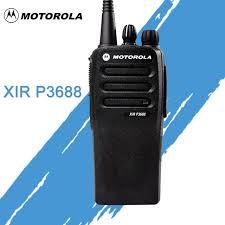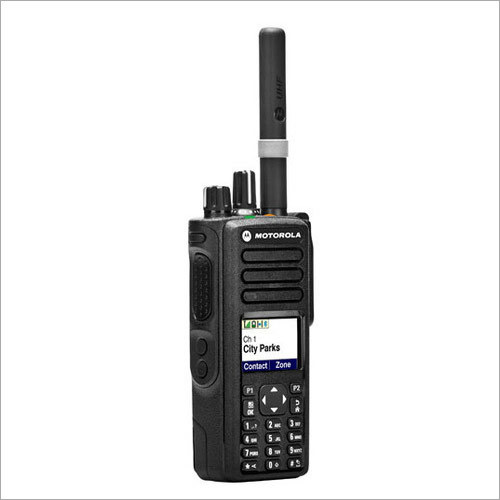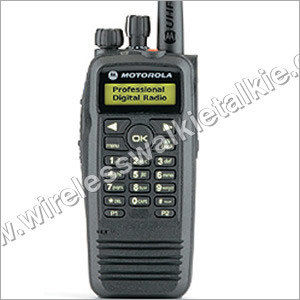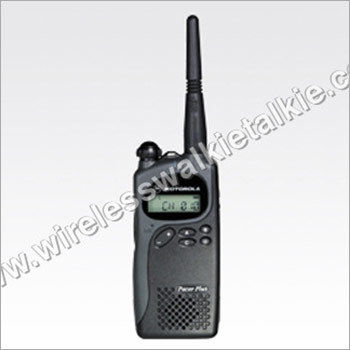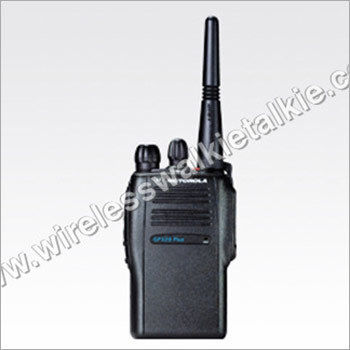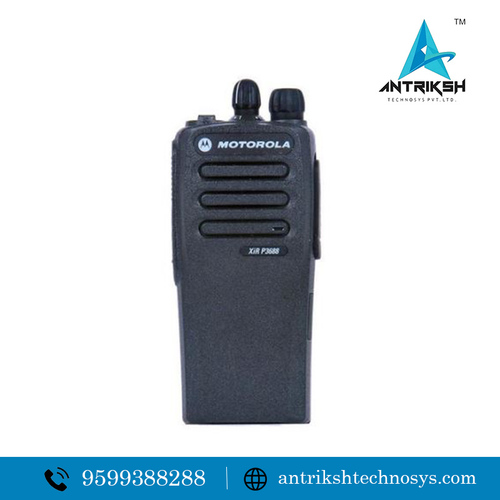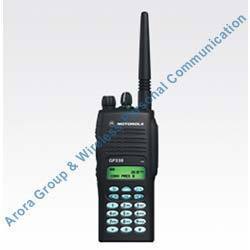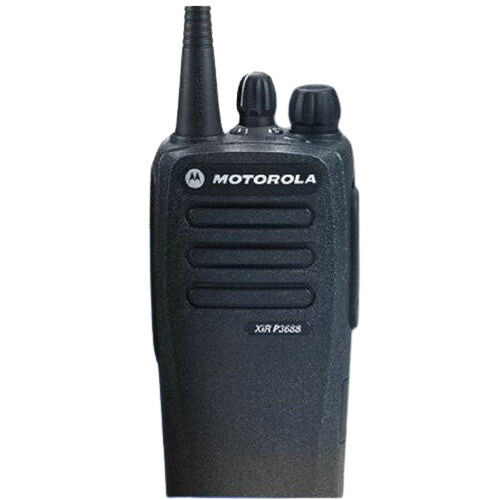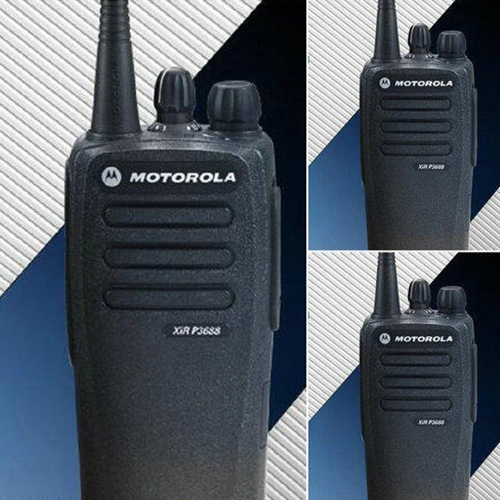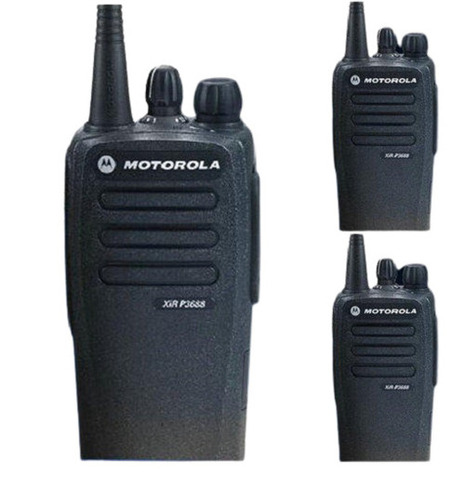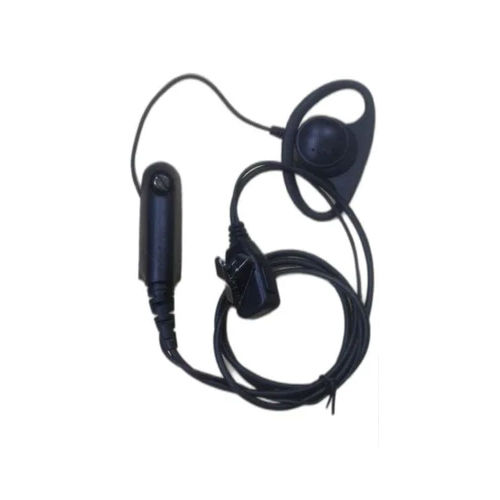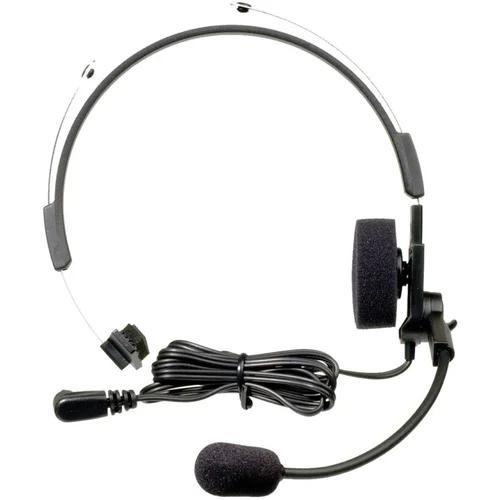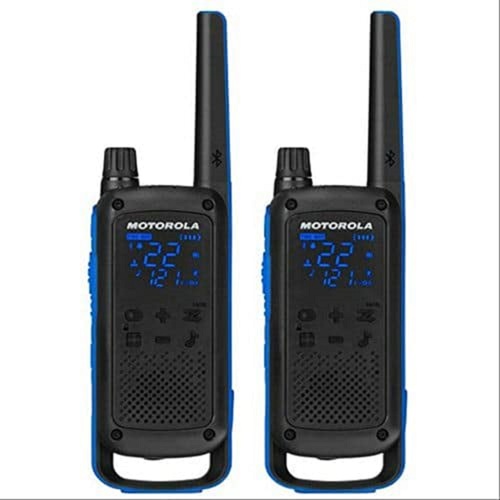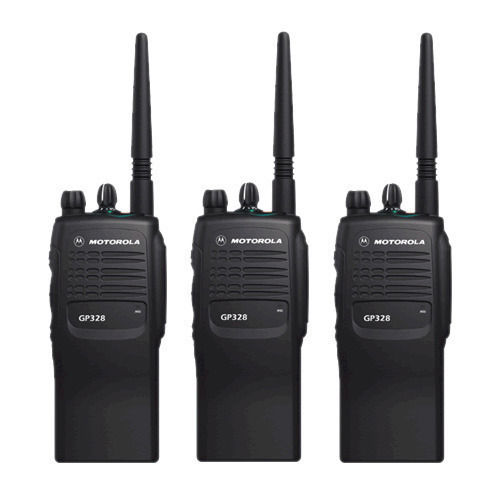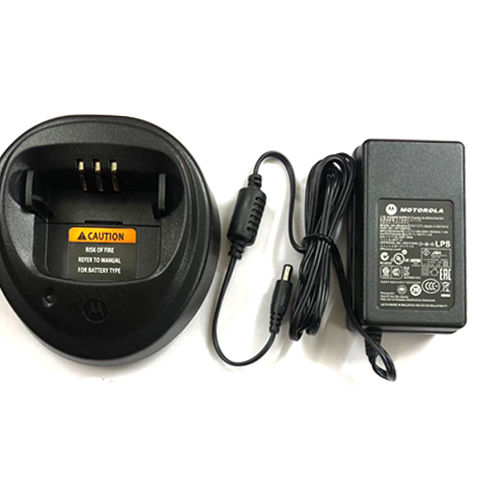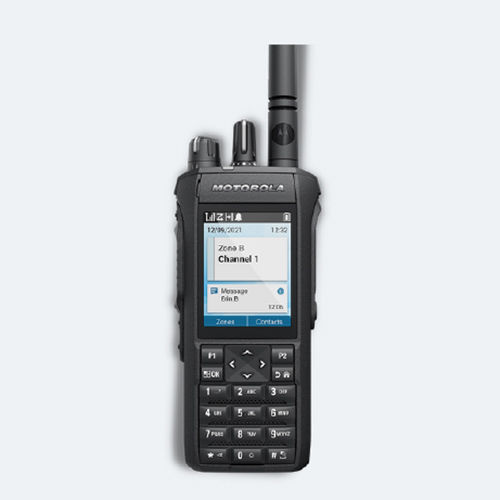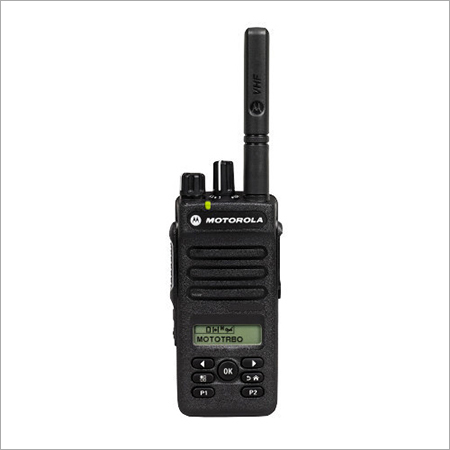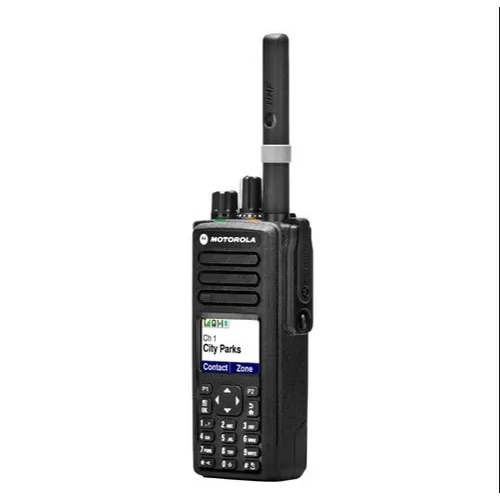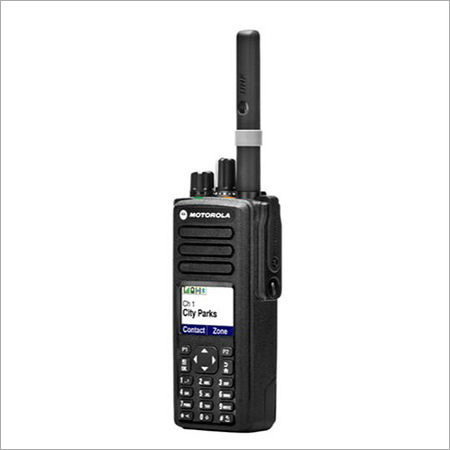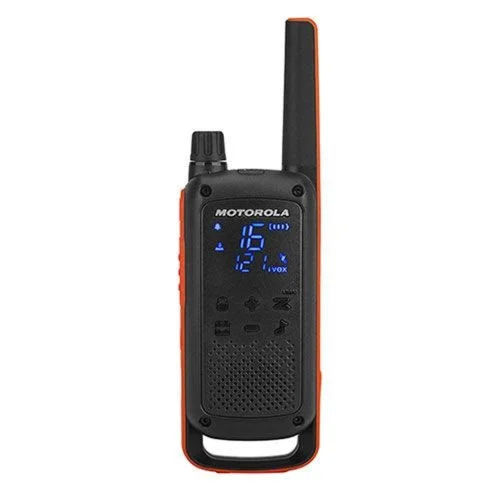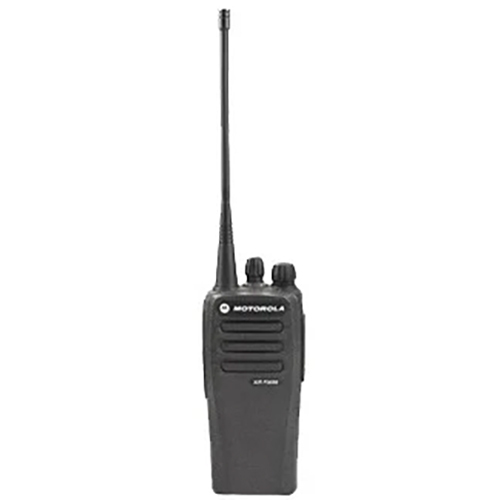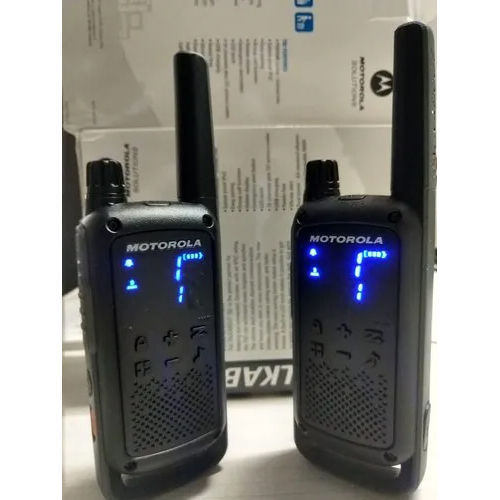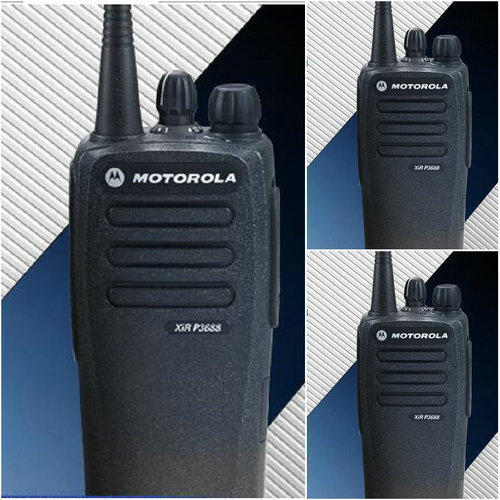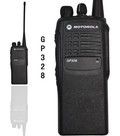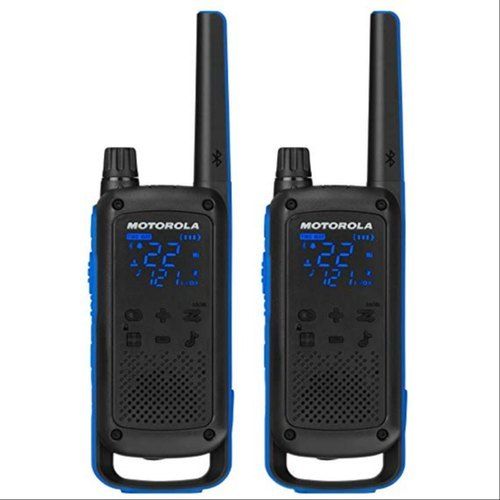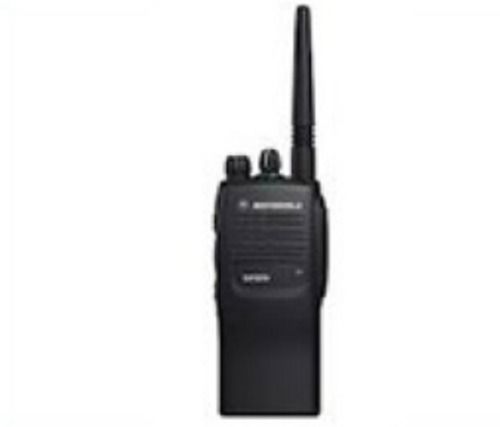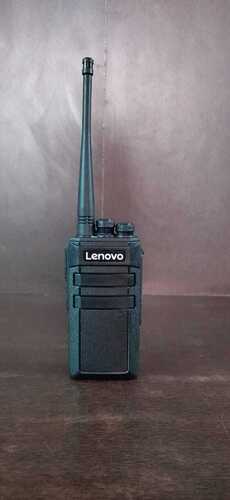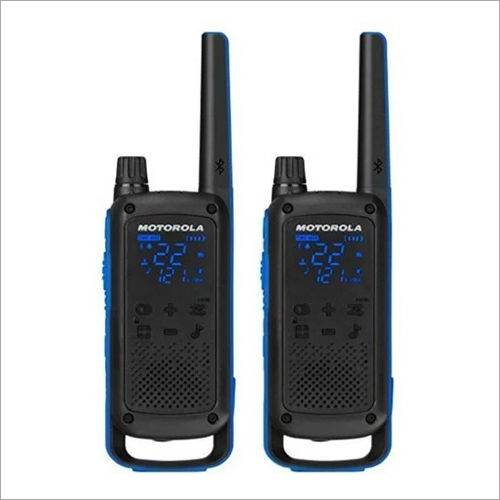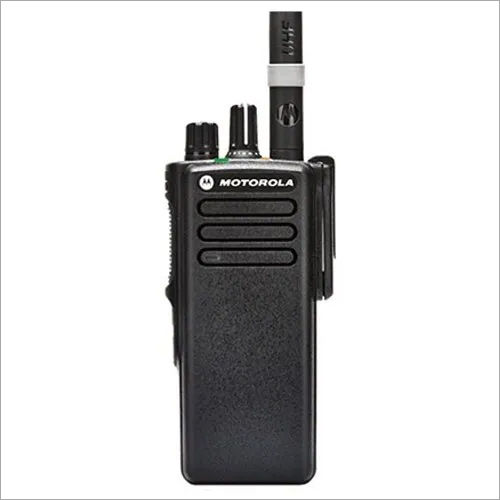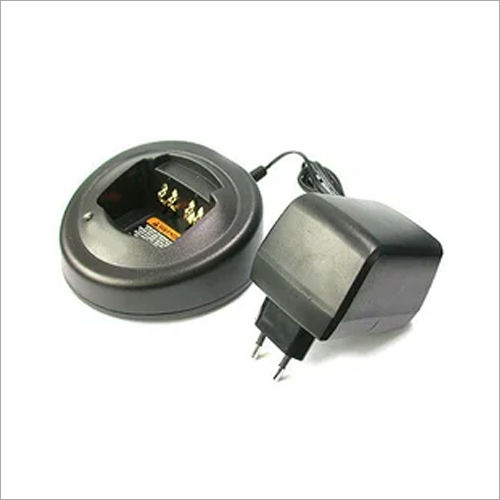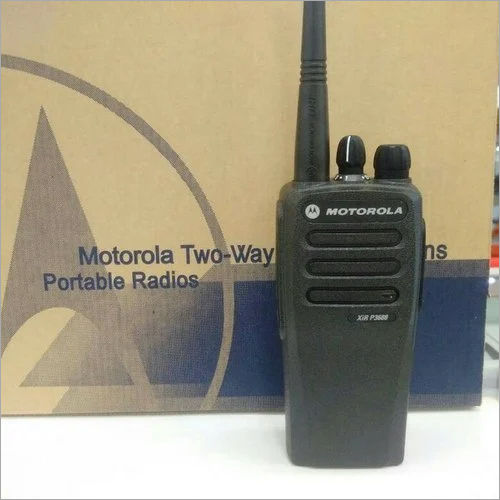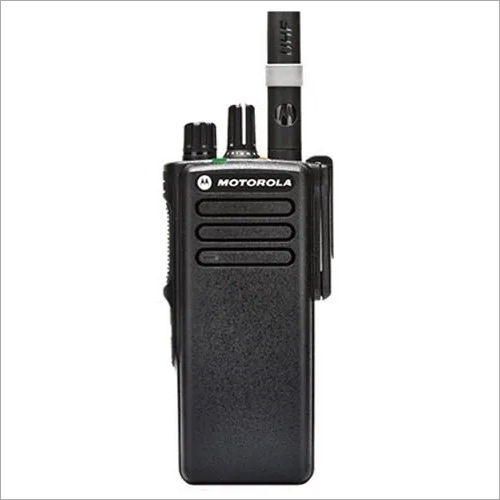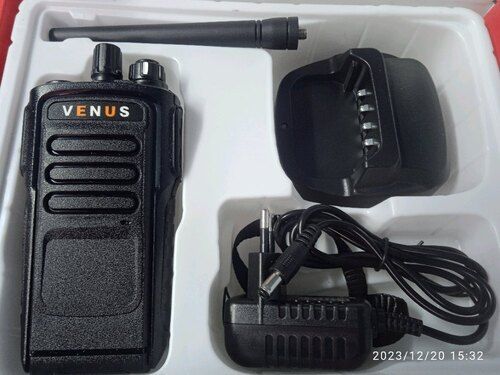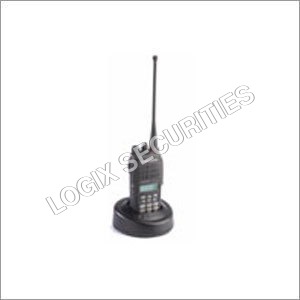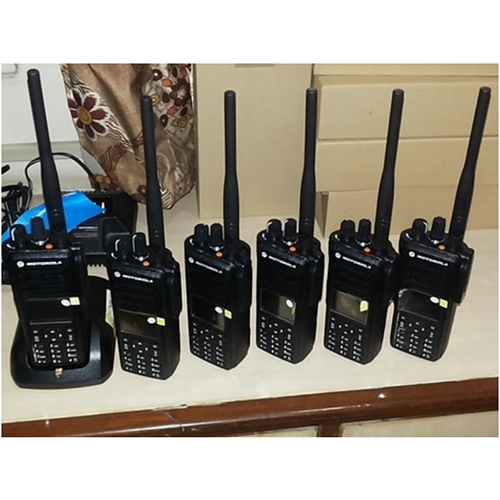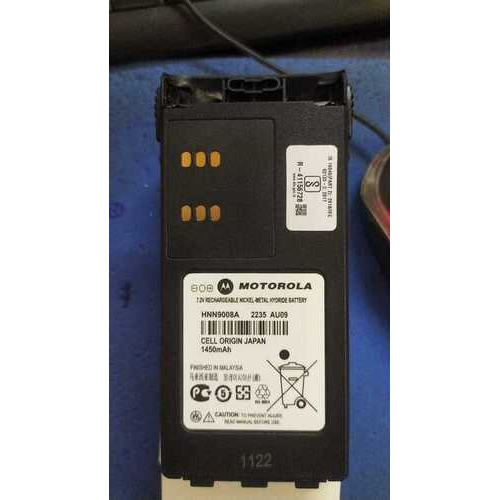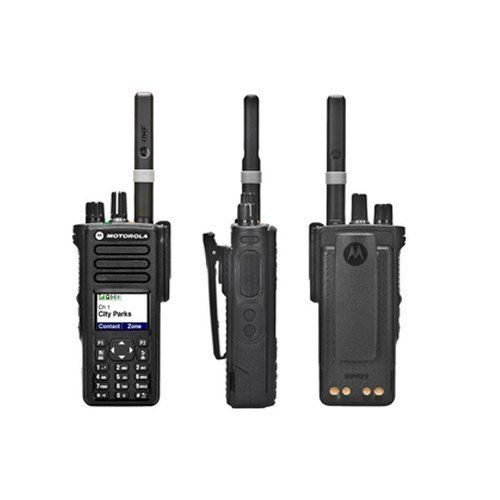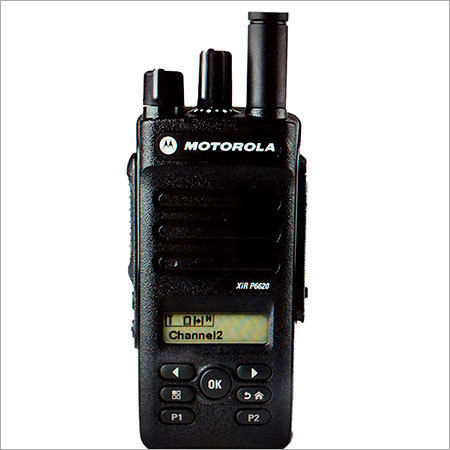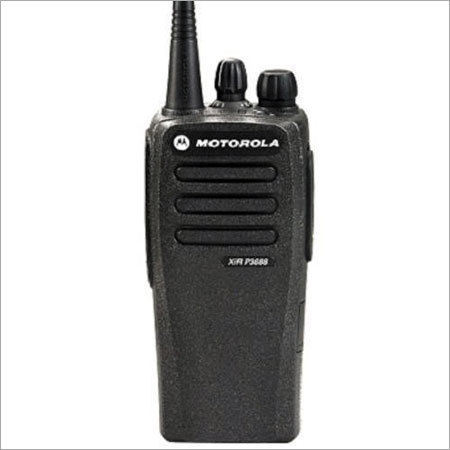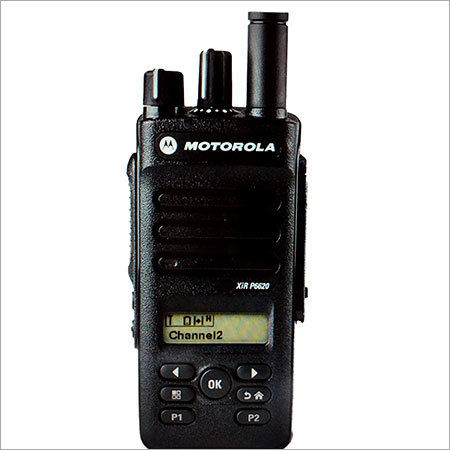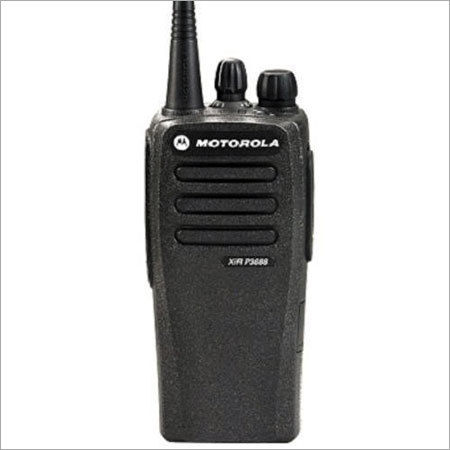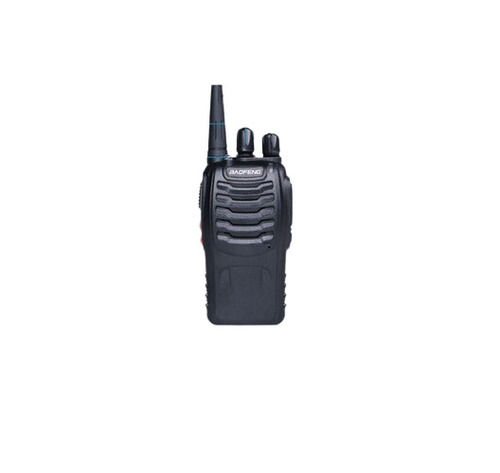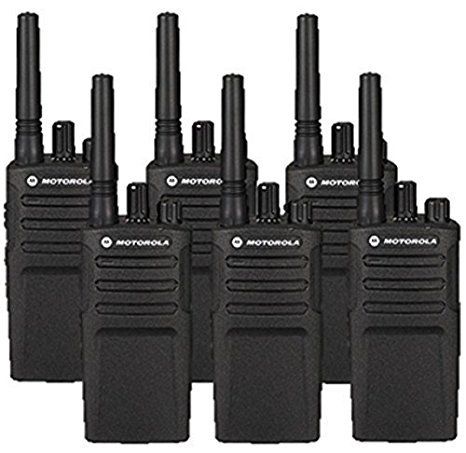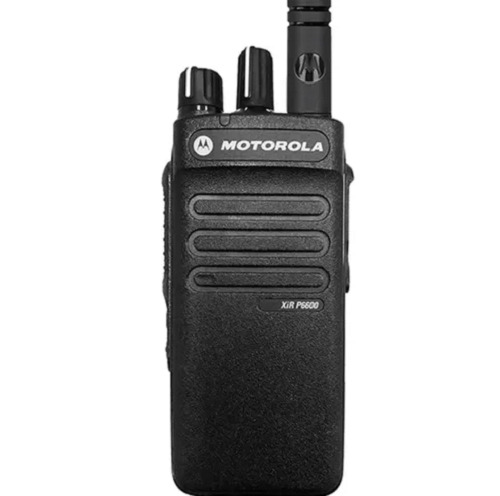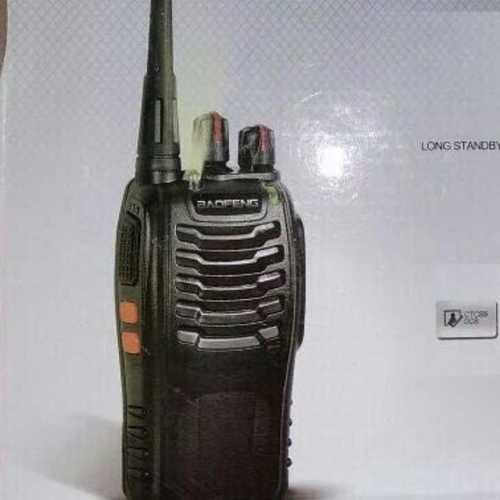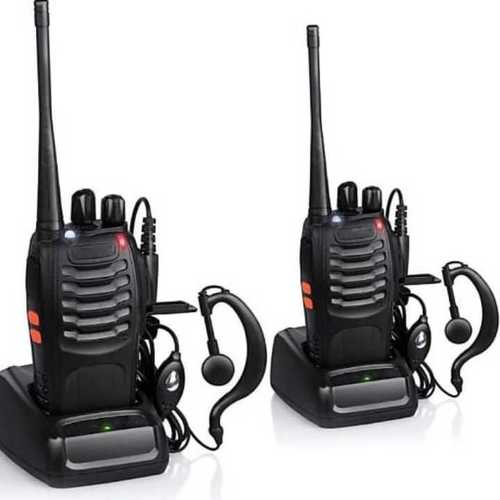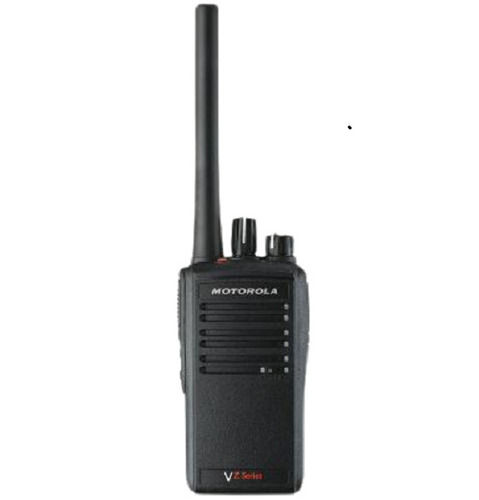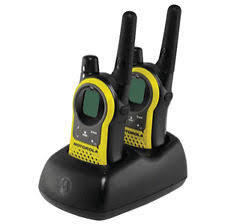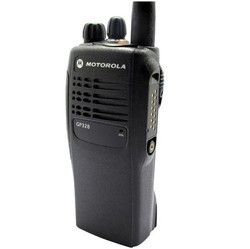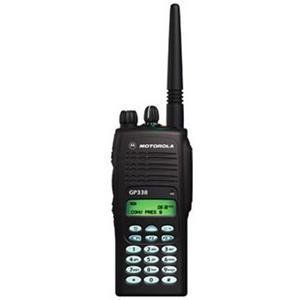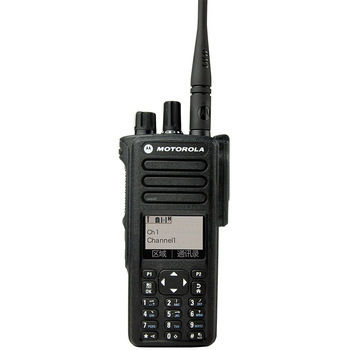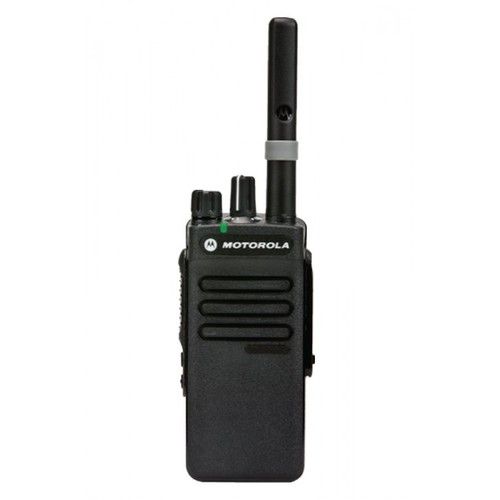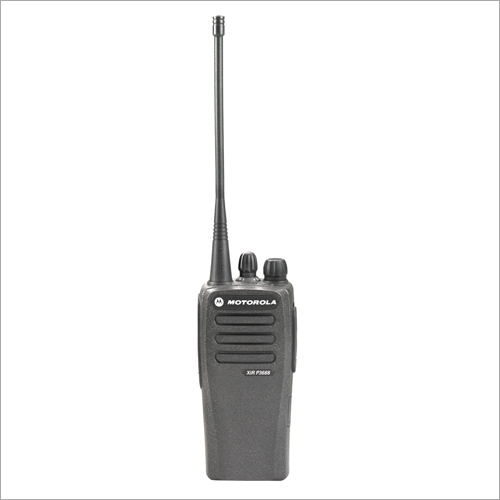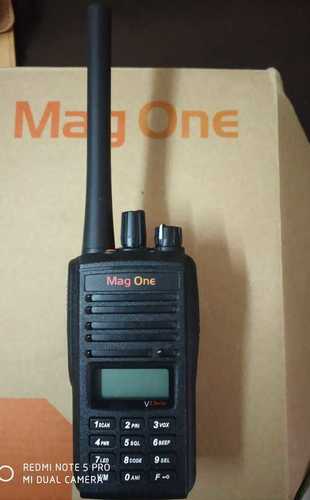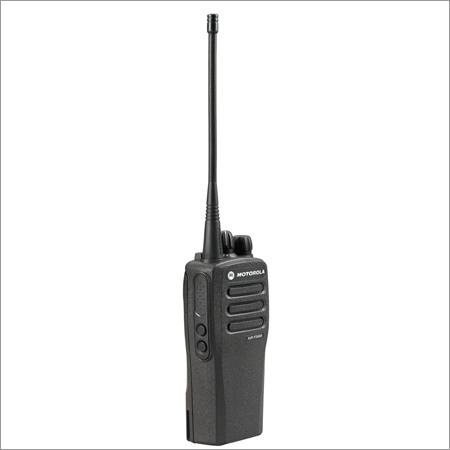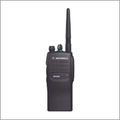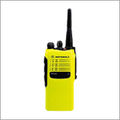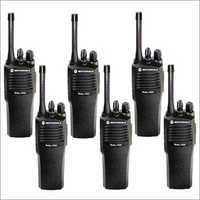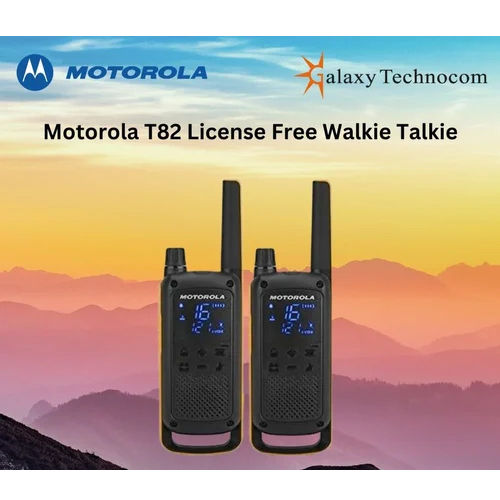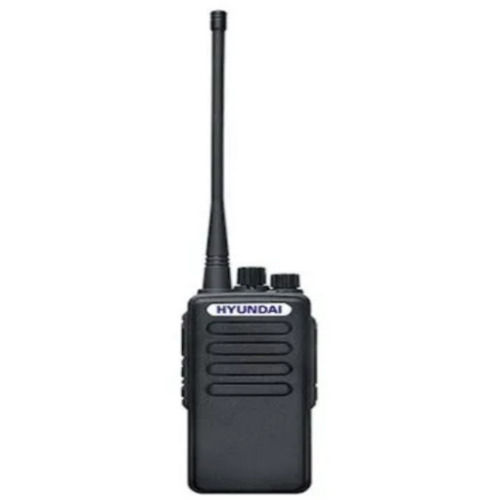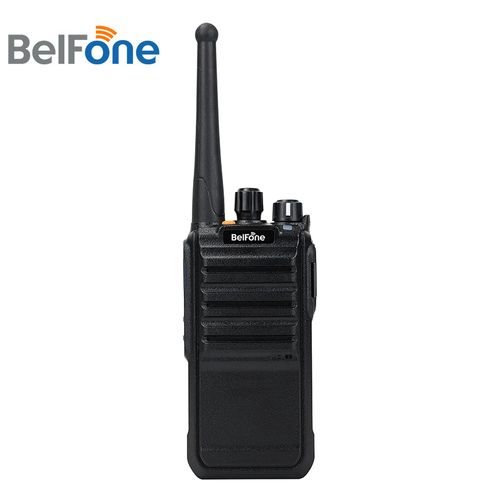- Tradeindia
- Interphones
- Motorola Walkie Talkie
Motorola Walkie Talkie
(69 products)Motorola Walky Talky Frequency Range (Hz): 350 Megahertz (Mhz)
Price: 14000 INR/Piece
MOQ1 Piece/Pieces
Product TypeMotorola
Frequency Range (Hz)350 Megahertz (MHZ)
Storage Channel16 Channel
Motorola Walkie Talkie
Price: 7500 INR/Piece
MOQ100 Piece/Pieces
Supply Ability50 Per Day
Delivery Time1 Days
Antriksh Technosys Pvt. Ltd.
New Delhi
 Trusted Seller
Trusted Seller14 Years
 Super Seller
Super SellerBlack Motorola Walkie Talkie With 2Km To 5Km Range
Price: 13000 INR/Number
MOQ100 Number
ColorBlack
TypeHandheld
FeatureEco Friendly
Diamond Anteena Private Limited
Delhi
 Trusted Seller
Trusted Seller3 Years
 Super Seller
Super SellerWalkie Talkie - Motorola
Price: 12765.0 INR/Pair
MOQ2 Pair/Pairs
FOB PortEx - Office
Supply Ability1000 Per Day
Delivery Time4 Days
Kt Automation Private Limited
Vadodara
 Trusted Seller
Trusted Seller15 Years
 Premium Seller
Premium SellerReliable Motorola Walkie Talkie
MOQ100 unit
Payment TermsCash on Delivery (COD), Cash Advance (CA), Cash Against Delivery (CAD), Cash in Advance (CID)
Delivery Time13 Days
Sample PolicyContact us for information regarding our sample policy
T M S Services And Wireless Solutions
New Delhi
 Premium Seller
Premium SellerLicense Based Motorola Radios Walkie Talkie - Color: Black
MOQ2 Unit/Units
BatteryYes
WarrantyYes
Weight190 Grams (g)
S.s. Communications
Jaipur
 Trusted Seller
Trusted Seller2 Years
 Premium Seller
Premium SellerMotorola Digital Walkie Talkie - Material: High-Quality Abs Material
Price: 37500 INR/Piece
MOQ40 , Piece/Pieces
Product TypeWalkie Talkies
Storage Channel16
Power7.5 Watt (w)
Space Communications & Electronics
Vadodara
 Trusted Seller
Trusted Seller16 Years
 Premium Seller
Premium SellerMotorola Walkie Talkie Vhf - Frequency Range (Hz): 156.0-174 Megahertz (Mhz)
Price: 22500.00 INR/Piece
MOQ1 Piece/Pieces
Frequency Range (Hz)156.0-174 Megahertz (MHZ)
Storage Channel64
MaterialPlastic
Gvtel Communication System
New Delhi
 Trusted Seller
Trusted Seller13 Years
 Premium Seller
Premium SellerBlack Motorola Walkie Talkie
Price: 5200 INR/Piece
MOQ1 Piece/Pieces
WarrantyYes
ColorBlack
TypeOther
Black Lenovo Walkie Talkie
Price: 4500 INR/Piece
MOQ2 Piece/Pieces
ColorBlack
Battery1700 mAh Battery
WarrantyOne Year Warranty
Asiar Solutions Pvt. Ltd.
Delhi
 Trusted Seller
Trusted Seller3 Years
 Premium Seller
Premium SellerG-T 46 Pro Walky Talky - Automatic Grade: Automatic
Price: 9500 INR/Number
MOQ1 Number
Product TypeG-T 46 Pro Walky talky
MaterialPlastic
Automatic GradeAutomatic
Motorola Walkies Talkies
Price: 5500 INR/Piece
MOQ1 Set/Sets
Payment TermsTelegraphic Transfer (T/T), Others, Cheque
Supply Ability1 Per Day
Delivery Time1 Days
Top Rated Products
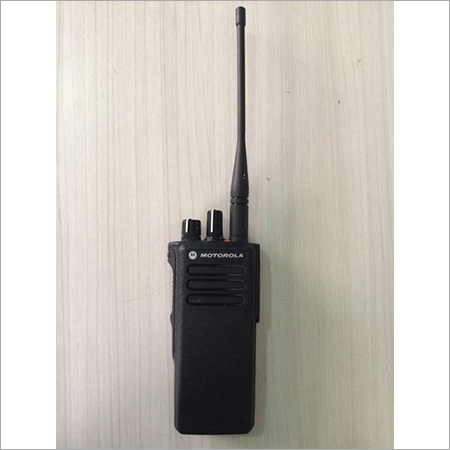
Motorola Digital Walkie Talkie - Material: High-Quality Abs Material
Space Communications & Electronics
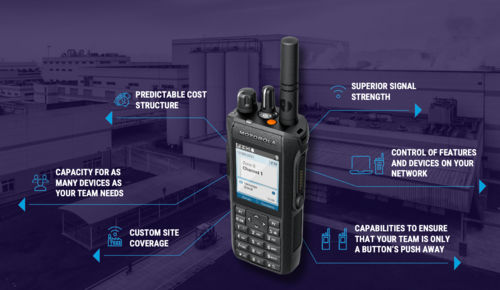
Motorola Walkie Talkie Vhf - Frequency Range (Hz): 156.0-174 Megahertz (Mhz)
Gvtel Communication System
FAQs Related to Motorola Walkie Talkie
Ex Plosion Proof Vhf Radios Current: 2900 Milliampere (Ma)
MOQ1 Set/Sets
Product TypeIP-67 EXPLOSION PROOF VHF HAND HELD RADIO SET
Frequency Range (Hz)134-174 Megahertz (MHZ)
Storage Channel1000
Light Weight Walkie Talkie
Product DescriptionFeature : Light Weight, Adjustable\015\012Condition : New\015\012Quality : Good\015\012Advantages : Easy to operate\015\012Durability : Long life\015\012Performance : Optimum\015\012Driven Type : Battery
Smarthome Walkie Talkie 5Km Long Range Two-Way Portable CB Radio BF-888S Portable Two-Way Radio with 16 Channel
Price: 2000 INR/Pair
MOQ10 Pair/Pairs
Product TypeWalkie Talkie
Storage Channel16
Talk Range5 KM
Motorola Walkie Talkie
Payment TermsDelivery Point (DP), Days after Acceptance (DA), Cheque
Sample AvailableYes
Sample PolicyContact us for information regarding our sample policy
Two Way Radios VHF/UHF Motorola Walkie Talkie
Payment TermsOthers, Telegraphic Transfer (T/T), Cash in Advance (CID), Cheque
Delivery Time1 Week
Sample PolicyContact us for information regarding our sample policy
Black Motorola Walkie Talkie Talk Range 8Km
Price: 12400 INR/Piece
MOQ4 Piece/Pieces
ColorBlack
BatteryNi-MH
TypeWrist Watech
Walkie Talkie BF-888S
Price: 2250 INR/Box
MOQ1 Box/Boxes
Payment TermsCash on Delivery (COD), Cheque, Cash Advance (CA)
Main Domestic MarketAll India
Black Wireless Battery Operated Motorola Walkie Talkie
Price: 5990 INR/Piece
MOQ10 Piece/Pieces
WarrantyNo
Battery1800 mAh
TypeHandheld
New Arrived Voice Analog Digital Sub-Audio Radio Alarm Motorola Walkie Talkie
Price: 11000 INR/Set
MOQ300 Set/Sets
ColorBlack
Battery2AA
Warranty1 Year
Walkie Talkies (Motorola)
MOQ10 Set/Sets
Payment TermsLetter of Credit (L/C), Cash in Advance (CID)
Delivery TimeWithin 1 Week
Sample PolicyContact us for information regarding our sample policy
Handheld Motorola Vz20 Radio (Walkie Talkie)
Price: 5300 INR/Box
MOQ1 Box/Boxes
TypeHandheld
Mototrbo Xir P3688 Handheld Radio Uhf/Vhf
Payment TermsCash Against Delivery (CAD)
Delivery Time15 Days
Main Domestic MarketAll India
Good Quality Motorola Portable Walkie Talkie
MOQ2 Piece/Pieces
FeatureGood Quality
Storage Channel16
Warranty2 Year
Black High Strength Walkie Talkie
Price: 4500 INR/Box
MOQ2 Box/Boxes
ColorBlack
TypeHandheld
FeaturePremium Grade
Wireless Motorola Walkie Talkie
Product DescriptionIn order to fulfill the diverse requirements of our valuable clients, we are involved in exporting, supplying and trading of Wireless Motorola Walkie Talkie in Lucknow, Uttar Pradesh, India. The broad spectrum of products that we deal in consists of Walkie Talkie, Power Solutions, Phones, Security S
Latest from Motorola Walkie Talkie
Motorola Walkie Talkie Two Way Radio
By:
Galaxy Technocom
BelFone BF-TD516 DMR Walkie Talkie
By:
Fujian Belfone Communications Technology Co., Ltd.
Motorola Walkie Talkie Price List
This Data was Last Updated on 2025-01-18
Motorola Walkie Talkie Manufacturers | Suppliers in India
Company Name | Member Since |
|---|---|
Manasrekha Enterprises Mumbai, India | 17 Years |
Space Communications & Electronics Vadodara, India | 16 Years |
Kt Automation Private Limited Vadodara, India | 15 Years |
Logix Securities New Delhi, India | 15 Years |
Antriksh Technosys Pvt. Ltd. New Delhi, India | 14 Years |
Gvtel Communication System New Delhi, India | 13 Years |
As Techno India Delhi, India | 6 Years |
Regal Arialcom Delhi, India | 4 Years |
Space Telecommunication System New Delhi, India | 4 Years |
Diamond Anteena Private Limited Delhi, India | 3 Years |
Upcoming Tradeshows
GLOBAL EXPO & KNOWLEDGE SUMMIT 2025
Fri, 24 Jan, 2025 - Sun, 26 Jan, 2025
Sign India 2025 ( Mumbai )
Fri, 21 Mar, 2025 - Sun, 23 Mar, 2025
Erbil Building Expo 2025
Tue, 20 May, 2025 - Fri, 23 May, 2025
International Soap & Detergent Expo 2025
Fri, 21 Feb, 2025 - Sat, 22 Feb, 2025
WATER EXPO VIJAYAWADA 2025
Wed, 29 Jan, 2025 - Fri, 31 Jan, 2025
Printing South China 2025
Tue, 04 Mar, 2025 - Thu, 06 Mar, 2025
CHINA INTERNATIONAL FURNITURE FAIR 2025
Tue, 18 Mar, 2025 - Fri, 21 Mar, 2025
GrainEx India 2025
Thu, 06 Feb, 2025 - Sat, 08 Feb, 2025
MachAuto 2025
Fri, 23 May, 2025 - Mon, 26 May, 2025
10th IMTOS-India Machine Tools Show 2025
Thu, 15 May, 2025 - Sun, 18 May, 2025
Popular Categories


